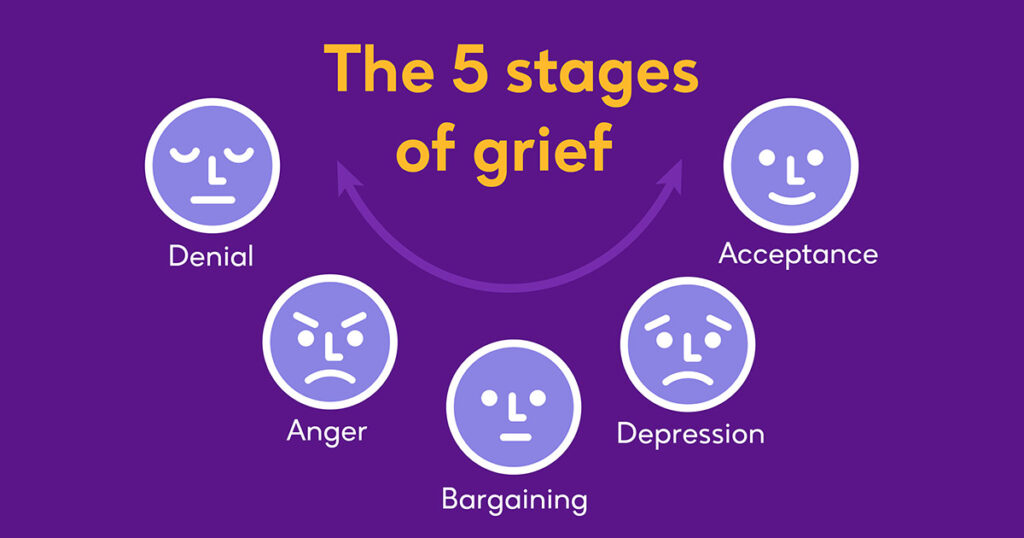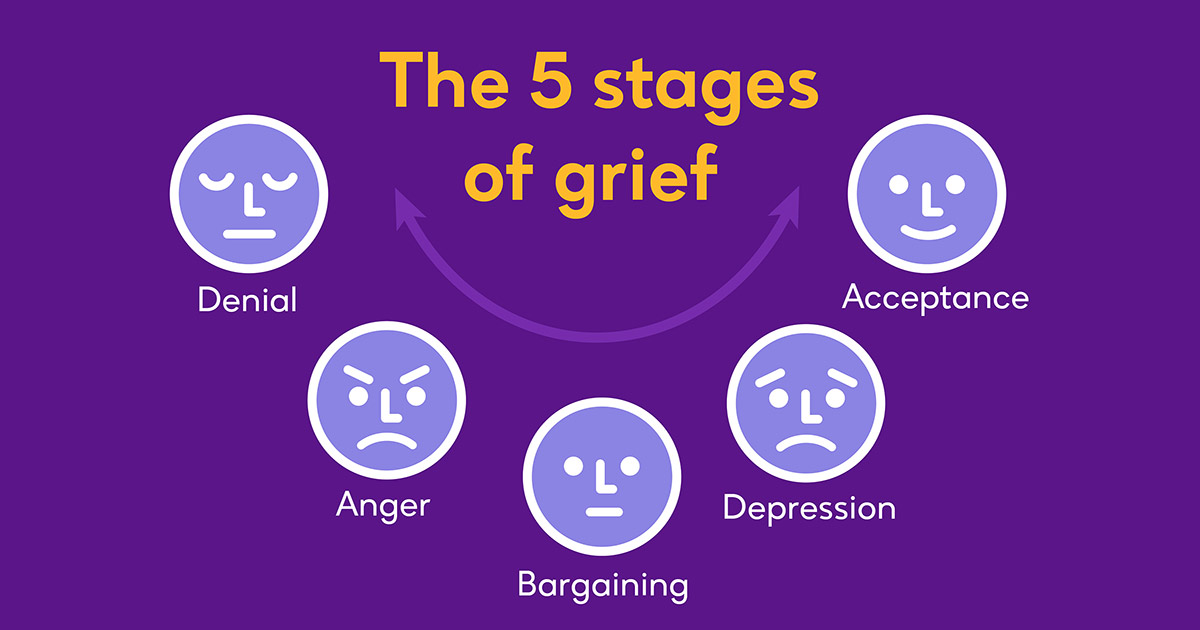Although grief is a universal experience, each person deals with it in a personal and unique way. Understanding the stages of grief may help provide a roadmap for those who are grieving, offering insight into the processes occurring behind the experienced emotions.
What is grief?
Grief is the emotional and natural reaction that comes after a significant loss. This is usually associated with the death of a loved one, but can also be attributed to job loss, divorce, retirement or a serious illness.
Oftentimes while experiencing grief or undergoing the grieving process, people may feel psychological distress such as anxiety, confusion, or that they can’t stop dwelling on the past, according to the American Psychological Association (APA).
In a study conducted by WebMD, 88% of grieving people experienced an emotional symptom like depression or anger, while 68% had a physical symptom such as a change in appetite or stomachache.
Navigating grief is difficult for everyone and there isn’t a right or wrong way to experience it. And while there isn’t a timeline to grief, there are stages that could help outline or explain what you’re experiencing emotionally.
What are the five stages of grief?
The five stages of grief were introduced by Swiss-American psychiatrist Dr. Elizabeth Kübler-Ross in her 1969 book “On Death and Dying.”
First developed to understand how patients with a terminal illness understood the grief that accompanies the dying process, Dr. Kübler-Ross’ research about the five stages of grief has now become a foundational framework for understanding how all people process grief.
The stages of grief are not linear. Someone can pop in and out of a stage at any point in their grieving journey. Instead, they serve as a tool to help us identify and make sense of the complicated emotions during the grieving process.
The five stages of grief are denial, anger, bargaining, depression and acceptance. Below, each stage is outlined, explained and followed by a real-life example.

Denial
Denial is often the mind’s initial response to a loss. In this stage, the person grieving is not receptive to the situation and doesn’t accept their loved one’s death. This is a protective mechanism that our emotions adapt to only take in as much as we can handle.
Example: Jason’s mother passes away and he refuses to start planning her funeral because he believes she will come back.
Anger
When denial fades, the person grieving may start to experience the true emotional heartbreak of the loss. In this stage, the person grieving begins to attach to the familiar emotion of anger. Anger gives a structure to the pain of the loss, producing a person or situation to be mad at in a situation that feels impossible.
Example: Anna’s sister passes away and she has an outburst at the hospital because she thinks the doctors didn’t do enough to save her sister’s life.
Bargaining
In this stage, the person grieving begins to use a lot of “what if” and “only if” statements that bring a lot of guilt to the situation. Bargaining is a person’s way to try and warp time or predict the future. Oftentimes, the person grieving is trying to negotiate their way out of pain as well, making promises that hold a painless future ahead.
Example: Isaiah’s dad passes away and he believes that if his dad lived with him instead of in a retirement community, he could have stopped him from dying.
Depression
Once the emotions settle on the present, depression can set in as the grieving person realizes their new reality and emptiness in this stage. They may begin reflecting or feeling introspective as they consider what their new life looks like without their loved one.
Depression is a normal and appropriate response to losing a loved one and is not considered a mental health condition in the context of grief. It’s also necessary in order for one’s soul to fully process the loss.
Example: Alexis’ best friend passes away and she begins to feel worthless, not seeing a reason to continue on.
Acceptance
Acceptance is not synonymous with happiness or contentment. It simply means that the grieving person accepts the reality that their loved one is forever gone. They now will learn how to live without them. In this stage, the grieving person fully integrates their loss into daily life.
Example: Miguel’s uncle passes away and he reflects on all the time he got to spend with him and the memories that he will hold forever.
Understanding the stages of grief and acknowledging the emotions that cycle after a loss is a critical piece to healing. Realizing that grief is a shared human experience amongst all may also help you feel less alone as you navigate each stage.
Coping with grief
Grief can have lasting effects on people. In fact, it can even make changes to the brain’s wiring and processes. Read more about what grief does to your brain here.
It’s common for the grieving process to take a year or longer. That means you might experience the five stages of grief over a drawn-out process, with feelings of grief getting less intense over time. However, it’s common to feel the pain and emptiness of loss for decades.
Learning to cope with grief is critical in order to maintain your daily routine and habits. Although a universal experience, we all must learn how to develop resilience and continue living after losing a loved one.
Various resources are available to support those coping with grief, offering strategies and ways to navigate life after loss. For more information on coping with grief and grief resilience, please visit the American Psychological Association’s website here.
 Back to Resource library
Back to Resource library
Browse top categories
At Enhabit our patients are our number one priority. From providing the latest medical practices to building deep personal connections, we’re focused on upholding every patient’s dignity, humanity and sense of control on their health care journey.
Home health
Our home health services give patients access to the care they deserve in the comfort of their own homes. From disease and injury management to recovery from surgery, our clinicians help patients confidently achieve their health care goals.
Hospice care
Our hospice care services place importance on the comfort of every patient living with a terminal illness. Our caring professionals are dedicated to providing not just physical care, but spiritual and emotional support to every patient and their loved ones.




